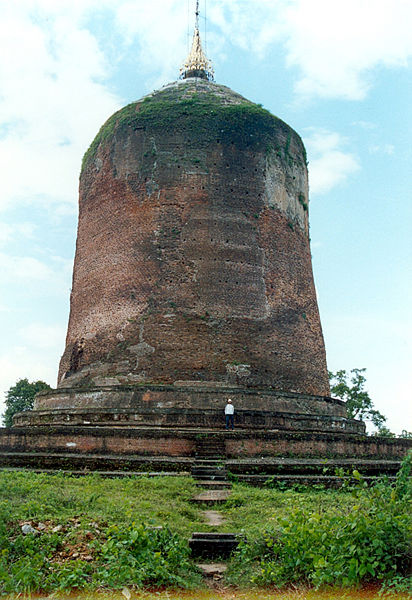Burma wants to nominate the ancient Pyu city state of Hanlin as a World Heritage Site, state media said on Monday.
According to the New Light of Myanmar, Minister of Culture Aye Myint Kyu made the announcement when he spoke to villagers in Hanlin at the weekend and asked them to support the bid by cooperating with the local authorities.
“The local people were urged to join hands with the department for preservation of the cultural heritage,” the report said.
While visiting the ancient site, the culture minister checked on the progress of stone inscriptions being prepared for the Hanlin archaeological museum, and requested that not only the Pyu stone inscriptions and reliefs be put on display, but also stone inscriptions unearthed from the Bagan era.
[related]
An earlier report on Saturday suggested that three of Pyu’s city states—Hanlin, Beikthano and Sri Kestra—be proposed as candidates for World Heritage status, a prestigious award which guarantees ancient sites funding for conservation and inspires tourism.
Deputy Minister of Culture Daw Sanda Khin was quoted by the New Light of Myanmar on Saturday as saying that evidence, including the 40 million-year-old fossils of Pondaung and Ponnya primates, had been discovered, “showing the country’s rich cultural heritage and evolution through the Stone Age, the Bronze Age and the Iron Age”.
Burma’s Ministry of Culture has reportedly been working in cooperation with UNESCO to sign the Convention for the Safeguarding of Intangible Cultural Heritage. They also met recently to discuss a capacity-building project related to the preservation of Burma’s cultural heritage, as well as to attend a seminar focused on the bid for the Pyu sites to be considered for World Heritage status.
The city states of Pyu existed from around the second century BC to the mid-11th century, and stretched from Sri Kestra near modern-day Pyay up through central Burma as far north as Tagaung, which is about 200km north of Mandalay.
The city-states were founded as part of the southward migration by the Tibeto-Burman-speaking Pyu, arguably the earliest inhabitants of Burma. The thousand-year period, often referred to as the “Pyu Millennium”, linked the Bronze Age to the beginning of the classical period when the Bagan kingdom emerged in the late 9th century.
Mostly centred around the confluences of the Irrawaddy and Chindwin rivers, the ancient towns were part of an overland trade route between China and India.
Hanlin, founded in the 1st century AD near present-day Shwebo in Sagaing division, was the largest and most important city until around the 7th or 8th century when it was superseded by Sri Kestra.
Five major walled cities and several smaller towns have now been excavated.



